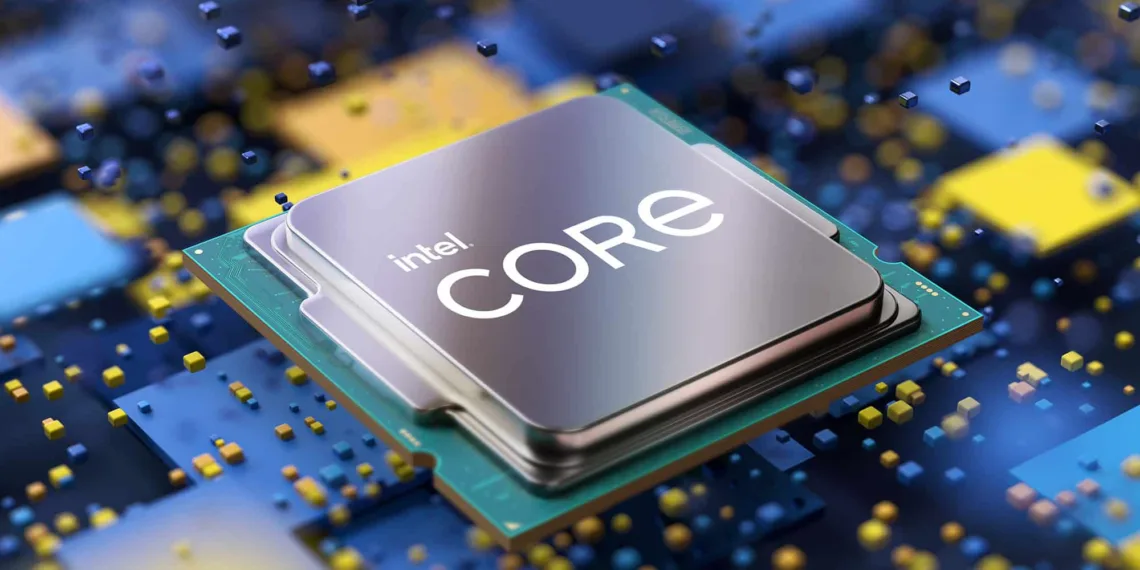Intel’s 13th Generation core family will include the Raptor Lake-S Desktop CPUs and this lineup will feature cores based on the Raptor Cove & Gracemont core architecture. They will be replacing the Intel Alder Lake-S 12th Gen Core family.
We have the latest leaked data from Raptor Lake and it states that this lineup will actually have three segments and we now also have leaked results about their power recommendations. The leaked data offers details about the ‘K’ series which is rated at 125W, 65W mainstream SKUs, and 35W low-power SKUs. The SKUs are detailed below:
- Intel Core i9 K-Series (8 Golden + 16 Grace) = 24 Cores / 32 Threads / 36 MB
- Intel Core i7 K-Series (8 Golden + 8 Grace) = 16 Cores / 24 Threads / 30 MB
- Intel Core i5 K-Series (6 Golden + 8 Grace) = 14 Cores / 20 Threads / 24 MB
- Intel Core i5 S-Series (6 Golden + 4 Grace) = 14 Cores / 16 Threads / 21 MB
- Intel Core i3 S-Series (4 Golden + 0 Grace) = 4 Cores / 8 Threads / 12 MB
- Intel Pentium S-Series (2 Golden + 0 Grace) = 4 Cores / 4 Threads / 6 MB
Firstly the enthusiast 125W Intel Raptor Lake-S Desktop SKUs will feature Core i9 models that come with up to 8 Raptor Cove cores and 16 Gracemont cores. This is a total of 24 cores and 32 threads.
The Core i7 lineup will have 16 core (8+8), and the Core i5 models will consist of 14 core (6+8) and 10 core (6+4). We also have the Core i3 models that will feature 4 cores however, Core i3 will not have any efficiency cores.
Intel 12th Gen Alder Lake-S & 13th Gen Raptor Lake-S Desktop CPU Comparison (Preliminary):
| CPU Name | P-Core Count | E-Core Count | Total Core / Thread | P-Core Base / Boost (Max) | P-Core Boost (All-Core) | E-Core Base / Boost | E-Core Boost (All-Core) | Cache | TDP | Price |
| Intel Core i9-13900K | 8 | 16 | 24 / 32 | TBA / 5.5 GHz? | TBA | TBA | TBA | 36 MB | 125W (PL1) 228W (PL2) | TBA |
| Intel Core i9-12900K | 8 | 8 | 16 / 24 | TBA / 5.3 GHz | 5.0 GHz (All Core) | TBA / 3.9 GHz | 3.7 GHz (All Core) | 30 MB | 125W (PL1) 228W (PL2) | TBA |
| Intel Core i7-13700K | 8 | 8 | 16 / 24 | TBA / 5.2 GHz? | TBA | TBA | TBA | 30 MB | 125W (PL1) 228W (PL2) | TBA |
| Intel Core i7-12700K | 8 | 4 | 16 / 20 | TBA / 5.0 GHz | 4.7 GHz (All Core) | TBA / 3.8 GHz | 3.6 GHz (All Core) | 25 MB | 125W (PL1) 228W (PL2) | TBA |
| Intel Core i5-13600K | 6 | 8 | 14 / 20 | TBA / 5.1 GHz? | TBA | TBA | TBA | 21 MB | 125W (PL1) 228W (PL2) | TBA |
| Intel Core i5-12600K | 6 | 4 | 12 / 16 | TBA / 4.9 GHz | 4.5 GHz (All Core) | TBA / 3.6 GHz | 3.4 GHz (All Core) | 20 MB | 125W (PL1) 228W (PL2) | TBA |
From previous information, we know that the lineup also has a larger L2 cache branded as Intel’s own ‘Game Cache’ for Core CPUs. The clock speeds on the cards are leaked to be 200 MHz so we can expect up to 5.5 GHz boost clocks considering Alder Lake-S Desktop CPUs will top out at 5.3 GHz. The Raptor Lake-S chips will support DDR5 memory speeds of up to 5600 Mbps (6500 Mbps LPDDR5(X)). below given are the power rating of the Raptor Lake:
Intel Raptor Lake Desktop CPUs Power Ratings
| CPU TDP Segment | 125W | 65W | 35W |
| Alder Lake PL2 | 188W (241W Perf) | 126W (202W Perf) | 78W (106W Perf) |
| Raptor Lake PL2 | 188W (253W Perf) | 133W (219W Perf) | 80W (106W Perf) |
| Alder Lake PL4 | 283W (359W Perf) | 195W (311W Perf) | 131W (171W Perf) |
| Raptor Lake PL4 | 238W (314W Perf) | 179W (277W Perf) | 118W (152W Perf) |
| Peak Wattage Increase (Alder Lake vs Raptor Lake PL2 Perf) | +5% | +5.5% | +2.5% |
| Peak Wattage Increase (Alder Lake vs Raptor Lake PL4 Perf) | -19% | -9% | -11% |
Intel Mainstream Desktop CPU Generations Comparison:
| Intel CPU Family | Processor Process | Processors Cores/Threads (Max) | TDPs | Platform Chipset | Platform | Memory Support | PCIe Support | Launch |
| Sandy Bridge (2nd Gen) | 32nm | 4/8 | 35-95W | 6-Series | LGA 1155 | DDR3 | PCIe Gen 2.0 | 2011 |
| Ivy Bridge (3rd Gen) | 22nm | 4/8 | 35-77W | 7-Series | LGA 1155 | DDR3 | PCIe Gen 3.0 | 2012 |
| Haswell (4th Gen) | 22nm | 4/8 | 35-84W | 8-Series | LGA 1150 | DDR3 | PCIe Gen 3.0 | 2013-2014 |
| Broadwell (5th Gen) | 14nm | 4/8 | 65-65W | 9-Series | LGA 1150 | DDR3 | PCIe Gen 3.0 | 2015 |
| Skylake (6th Gen) | 14nm | 4/8 | 35-91W | 100-Series | LGA 1151 | DDR4 | PCIe Gen 3.0 | 2015 |
| Kaby Lake (7th Gen) | 14nm | 4/8 | 35-91W | 200-Series | LGA 1151 | DDR4 | PCIe Gen 3.0 | 2017 |
| Coffee Lake (8th Gen) | 14nm | 6/12 | 35-95W | 300-Series | LGA 1151 | DDR4 | PCIe Gen 3.0 | 2017 |
| Coffee Lake (9th Gen) | 14nm | 8/16 | 35-95W | 300-Series | LGA 1151 | DDR4 | PCIe Gen 3.0 | 2018 |
| Comet Lake (10th Gen) | 14nm | 10/20 | 35-125W | 400-Series | LGA 1200 | DDR4 | PCIe Gen 3.0 | 2020 |
| Rocket Lake (11th Gen) | 14nm | 8/16 | 35-125W | 500-Series | LGA 1200 | DDR4 | PCIe Gen 4.0 | 2021 |
| Alder Lake (12th Gen) | Intel 7 | 16/24 | 35-125W | 600 Series | LGA 1700 | DDR5 | PCIe Gen 5.0 | 2021 |
| Raptor Lake (13th Gen) | Intel 7 | 24/32 | 35-125W | 700-Series | LGA 1700 | DDR5 | PCIe Gen 5.0 | 2022 |
| Meteor Lake (14th Gen) | Intel 4 | TBA | 35-125W | 800 Series? | LGA 1700 | DDR5 | PCIe Gen 5.0? | 2023 |
| Arrow Lake (15th Gen) | Intel 4? | 40/48 | TBA | 900-Series? | TBA | DDR5 | PCIe Gen 5.0? | 2024 |
| Lunar Lake (16th Gen) | Intel 3? | TBA | TBA | 1000-Series? | TBA | DDR5 | PCIe Gen 5.0? | 2025 |
| Nova Lake (17th Gen) | Intel 3? | TBA | TBA | 2000-Series? | TBA | DDR5? | PCIe Gen 6.0? | 2026 |








